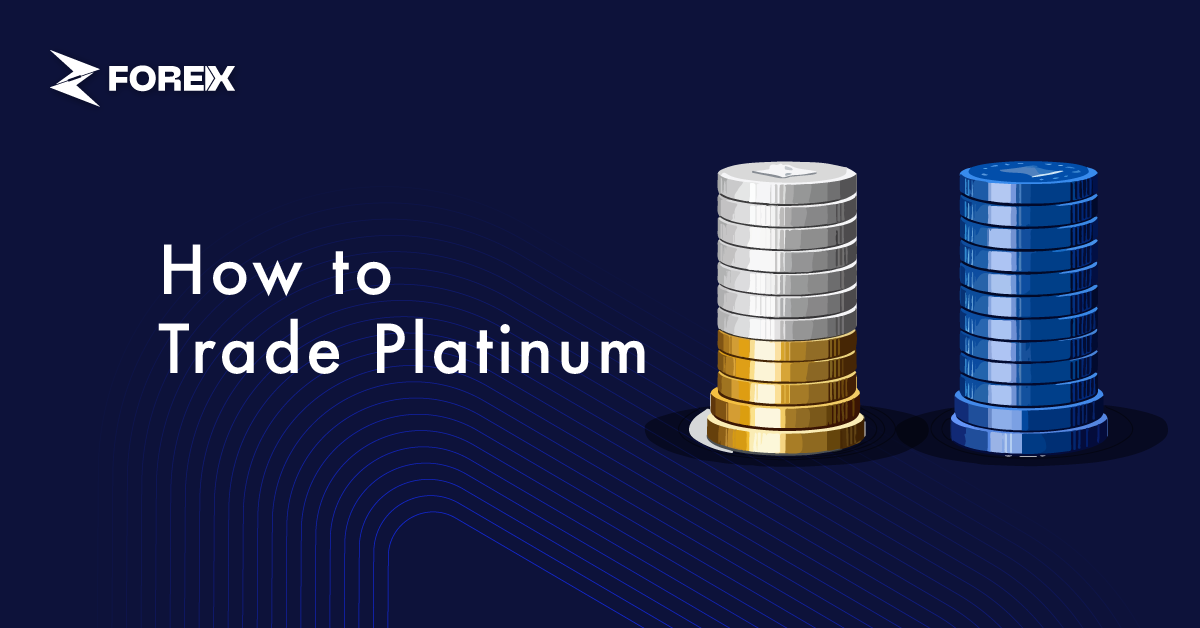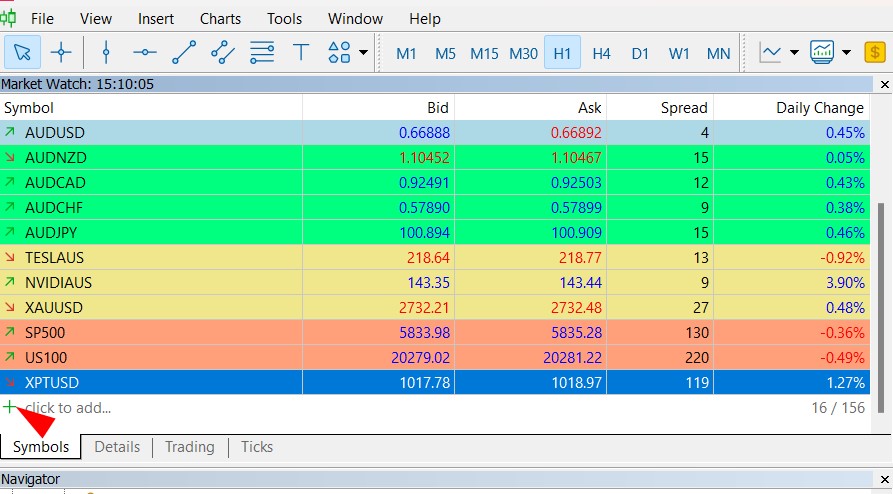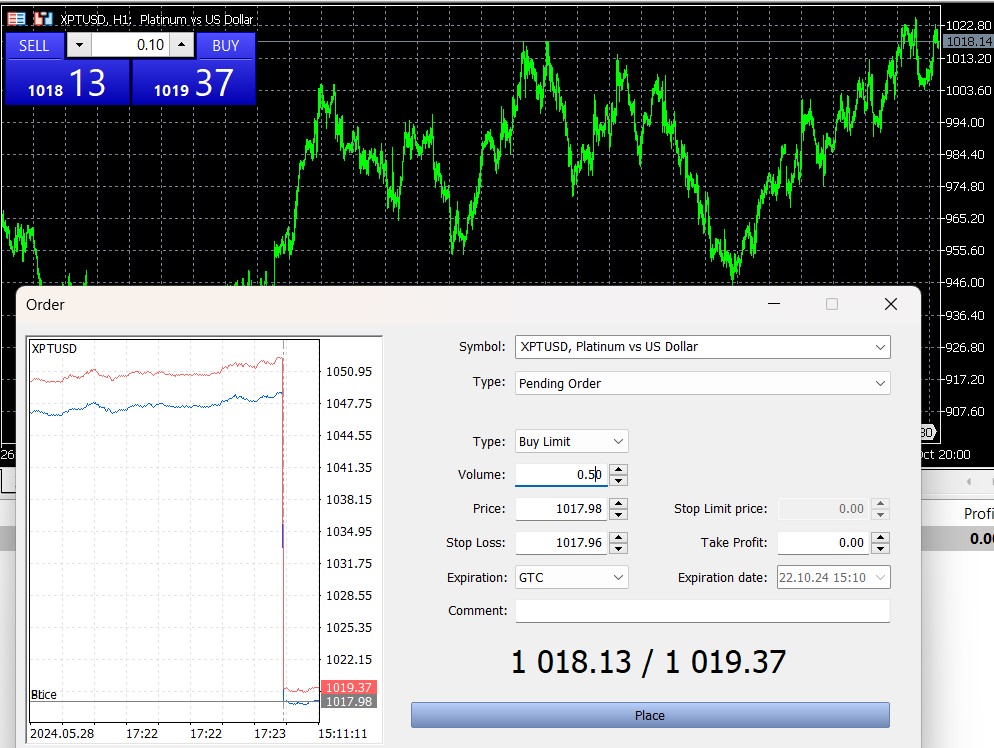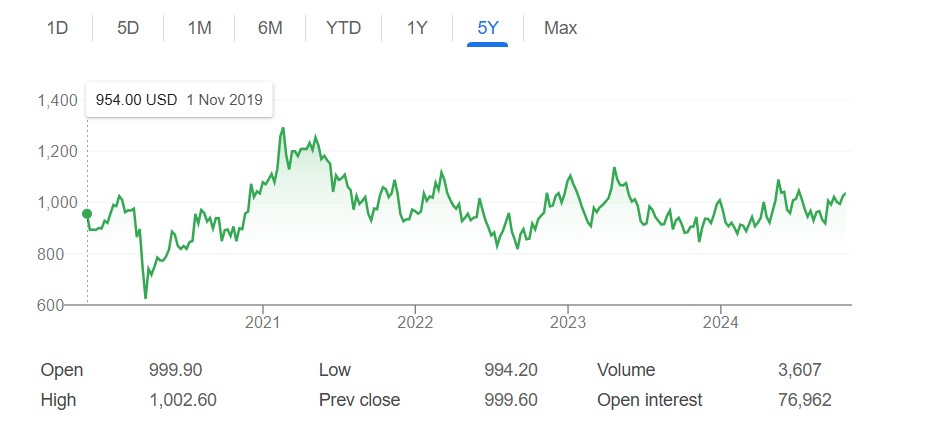
Platinum stands out as an important investment instrument among precious metals. Its rarity and widespread industrial use make platinum trading an attractive option.
Compared to other precious metals, platinum is in high demand, particularly in the automotive, electronics, and jewelry industries. This demand directly impacts platinum prices, offering traders both short-term trading opportunities and long-term investment potential.
Various trading instruments, such as futures, options, and CFDs (contracts for difference), are available for platinum trading. In our article, we covered the details of platinum trading.
Platinum trading is a type of trading where investors aim to profit from the price movements of metal. It is a rare and widely used metal in industry, so considered a highly sought-after commodity in the markets.
The trading of platinum can be conducted through various instruments such as futures, options, the spot market, and CFDs (contracts for difference). These instruments allow investors to take positions based on changes in metal prices.
Platinum prices are closely linked to the balance of supply and demand, global economic developments, industrial production, and especially the demand from the automotive sector. Metal, which is being particularly used in the production of catalytic converters, is affected by developments in the automotive industry. Additionally, platinum prices can move in correlation with other precious metals like gold and silver.
To start platinum trading at zForex is a seamless and easy process that allows you to access precious metals market easily. Here's a step-by-step guide to help you get started:


Platinum is a valuable metal with a wide range of applications in various industries and sectors. In the automotive industry, it plays a role in the production of catalytic converters. These devices help reduce harmful gases emitted by vehicles, minimizing environmental damage. With the development of environmentally friendly technologies in vehicles, the use of this metal has also increased.
Additionally, it is widely used in the electronics and electrical sectors. Due to its high conductivity and resistance to corrosion, it is used in electrical circuits, contacts, and various electronic components. The durability of the metal enhances the reliability of technological devices.
It is also frequently used in the jewelry industry. Due to its rarity and aesthetic appeal, it is preferred in the creation of high-quality jewelry. Its durable and shiny nature ensures the metal's long-lasting presence in jewelry.
Platinum also has extensive use in the medical and chemical industries. It is a preferred element in sensitive fields such as medical devices, pharmaceutical production, and laboratory equipment. It is also used as a catalyst to accelerate certain chemical reactions.
Although precious metals date back to ancient times, platinum has gained importance in modern times. First discovered in the 18th century, this rare element initially did not attract as much attention as gold and silver. However, with industrial developments and the Industrial Revolution, it was realized that this metal could be used in many sectors.
Especially from the mid-20th century onwards, the increasing demand in the automotive and electronics sectors heightened its importance. With the widespread use of catalytic converters in the automotive industry, its trading has become increasingly important in global markets. Its durability and conductivity features in the electronics sector made it an attractive investment opportunity for traders.
During the same period, with the development of financial markets, it first began trading on the New York Mercantile Exchange (NYMEX) in the 1950s. With trading instruments such as futures, options, and contracts for difference (CFDs), investors found opportunities to engage in speculative transactions based on this metal.

During the 1970s, the oil crisis and the resulting global economic recession put pressure on prices, leading to a decline in platinum prices. However, in the 1980s, with the global economy recovering and industrial demand increasing again, prices started to rise.
In the early 2000s, the general rise in commodity markets also benefited platinum, resulting in significant price appreciation. Although prices fluctuated during the 2008 Global Financial Crisis, they regained upward momentum as economies recovered after the crisis.
In recent years, the growing interest in sustainable energy and environmentally friendly technologies has increased demand for platinum, positively impacting its prices. However, economic uncertainties and global trade dynamics continue to cause price fluctuations from time to time.
Prices are primarily dependent on the balance of supply and demand. Platinum, being difficult to extract from mines, can lead to higher prices when production levels are low. At the same time, developments in industrial demand and the manufacturing sector can increase demand, causing price fluctuations.
Platinum prices are often compared to gold. Gold is traditionally considered a safe haven, so, during periods of economic uncertainty, platinum prices generally remain lower than gold. However, with the rise in industrial usage, the gap between these two metals can narrow. Traders often turn to gold during volatile times and shift toward platinum during periods of growth.
Platinum is a highly valued metal in the jewelry industry. When jewelry demand increases, especially in markets like Asia and the Middle East, prices tend to rise. Consumer demand in the jewelry sector can sometimes be a key factor influencing prices.
Geopolitical developments have an impact on platinum prices. The fact that a large portion of production is concentrated in specific regions like South Africa means that political or economic issues in these countries can affect prices. Additionally, trade wars, sanctions, and global trade policies can also lead to price fluctuations.
One of platinum's largest application areas is the automotive sector. Its widespread use in catalytic converters makes its price highly sensitive to developments in the automotive industry. The rise of electric vehicles or an increase in automotive production can directly boost demand for this metal.
Platinum has a wide range of applications in electronics, chemicals, and other industrial sectors. Its high resistance to heat and ability to catalyze chemical reactions increases demand for this metal in various industries. The growth in industrial demand can drive prices upward.
Platinum trading can be carried out through various financial instruments for traders. It is possible to trade both the physical metal itself and derivative products and financial instruments. Traders can choose the tools that best fit their risk tolerance and trading strategies.
Below, we will discuss some of the key methods and instruments that can be used for platinum trading.
Platinum CFDs (Contracts for Difference) allow investors to profit from the price movements of this valuable metal without having to physically purchase it. One of the main advantages of CFD trading is the ability to use leverage, enabling investors to open larger positions with a smaller initial capital.
In platinum CFD trading, investors can open a long (buy) position if they believe the price will rise, or a short (sell) position if they expect the price to fall. This flexibility allows for the application of different strategies depending on market conditions.
Precious metal bullion is considered a secure investment for traders as a physical asset. Platinum bullion consists of metal bars or coins with a high purity level, typically 99.95% pure.
Bullion trading is generally preferred for long-term investments. The ownership of physical assets is regarded as a safe haven since their value tends to hold steady regardless of price fluctuations.
However, there are several considerations when it comes to this type of trading: First, bullion investment requires additional costs such as storage and insurance. Investors may need to rent special vaults to store the physical assets securely.
Additionally, liquidity may not always be easily available for investors who want to trade large quantities. The spread during transactions is also a key factor. There is usually a difference between the buying and selling price of bullion.
Another important aspect of platinum bullion trading is that these assets are typically purchased for long-term value retention. Therefore, bullion trading may not always be suitable for investors seeking short-term trading opportunities. However, for those looking for a safe haven and who prioritize the physical ownership of the metal, bullion trading can be an attractive option.
Futures contracts are financial instruments in which investors agree to buy or sell a specific asset at a predetermined date and price in the future. It is a strategy frequently preferred in metal trading, allowing investors to speculate on how prices will move in the future.
For example, an investor who expects prices to rise will open a long (buy) position, while an investor anticipating a price drop will open a short (sell) position.
Leverage is also commonly used in futures trading. With leverage, investors can open larger positions with less capital.
Platinum futures trading typically takes place on organized exchanges and is conducted through standardized contracts, ensuring security and transparency in transactions. However, futures contracts have an expiration date, and when the contract term ends, investors must either close their positions or make delivery.
Futures contracts are particularly suitable for short-term trading strategies. In highly volatile markets, traders aim to profit from price fluctuations.
Options are financial instruments that give investors the right, but not the obligation, to buy or sell a specific asset at a predetermined price within a certain period. The exercise of this right is entirely up to the investor, meaning they are not required to buy or sell the asset.
Options are typically divided into two types:
Platinum options offer traders the opportunity to profit from market movements at a lower cost. Since they pay a relatively small fee known as the option premium, investors can control larger positions. However, there is also the risk that the option may expire worthless. In that case, the investor only loses the premium they paid.
Investing in platinum shares offers traders two ways to profit. First, if the company invested in increases its profitability, the stock prices may rise, providing investors with capital gains. Second, many companies regularly distribute dividends, which provide investors with an additional income stream.
Investing in these types of stocks may be less risky compared to other investment tools like physical metal or futures contracts. This is because the performance of a mining company is not solely dependent on the price of the metal; factors such as management efficiency, production capacity, and operational costs also influence the company's profitability.
However, this investment vehicle is not without risks. The performance of mining companies can fluctuate greatly due to global economic conditions, political situations, and the demand for the metal. Additionally, geopolitical uncertainties in regions where the metal is extracted, labor strikes, and environmental regulations can negatively affect these companies' stock prices.
ETFs (Exchange Traded Funds) are financial instruments that allow investors to invest based on the performance of a basket of assets. Instead of investing in a single asset like individual stocks or futures contracts, ETFs allow investors to purchase a variety of assets with a single transaction.
One of the biggest advantages of investing in platinum ETFs is that they offer a diversified portfolio. Rather than investing in the shares of a single company, investors can spread their risk by investing in multiple mining companies or futures contracts tied to the metal itself.
Since ETFs are traded on stock exchanges, they can be easily bought and sold like stocks. This provides liquidity to investors, allowing them to trade actively throughout the day.
However, platinum ETFs also carry certain risks. Sudden fluctuations in metal prices can negatively impact the performance of the ETF. Additionally, the performance of the assets within the ETF can vary depending on broader market conditions.
Traders can benefit from various platinum trading strategies depending on market conditions, price movements, and risk tolerance. Below, we will discuss the most commonly used strategies in trading this metal.
Market analysis is one of the most essential steps for traders to succeed in platinum trading. Many factors affect the metal's prices, and analyzing them correctly helps investors make informed decisions.
Market analysis includes both fundamental and technical analysis:
Fundamental analysis involves examining the supply and demand dynamics of the metal. Investors should closely follow the demand in sectors such as automotive, electronics, and jewelry. A large portion of the demand for this metal is used in catalytic converter production, so developments in the automotive sector can directly impact prices.
Additionally, geopolitical events, economic instability, and natural disasters in major platinum-producing countries such as South Africa, Russia, and Zimbabwe can disrupt supply and impact prices. South Africa alone accounts for nearly 70% of the world's platinum production, with Russia as another key producer. For instance, labor strikes in South African mines, which are common due to wage disputes, can halt production and lead to price spikes. In 2014, a five-month strike in South Africa caused a major supply disruption, leading to platinum prices surging by over 8%.
Technical analysis aims to predict future price movements by studying past price actions and trading volumes. Some of the most commonly used technical analysis tools in platinum trading include moving averages, RSI (Relative Strength Index), and MACD (Moving Average Convergence Divergence).
Traders can use these indicators to assess whether the market is in overbought or oversold conditions and form buy-sell strategies accordingly. Support and resistance levels also help investors determine their entry and exit points.
Market news is another critical factor influencing metal prices. For example, central bank interest rate policies, inflation data, and global economic growth rates play a decisive role in shaping investor risk appetite and affecting prices. Additionally, economic reports and central bank announcements can lead to sudden price movements.
Spread trading is typically done between two different futures contracts. Traders evaluate the price difference between the same commodity's contracts with different maturities. For example, a trader may take a long (buy) position in one futures contract while taking a short (sell) position in another. This strategy provides an opportunity to profit from price changes of the same asset across different time frames.
The risk in spread trading is generally lower than holding an open position in a single contract. This is because the trader opens two opposing positions, thereby hedging against market volatility. However, for this strategy to be successful, the trader must accurately predict how the price difference between the two contracts or assets will change.
Common types of spreads include:
The primary goal of swing trading is to capture market signals indicating movement in a specific direction and profit from that movement. This strategy can be applied during both bullish and bearish market phases.
In trading a volatile commodity, the swing strategy can be highly effective. Platinum prices, for example, can fluctuate rapidly due to industrial demand, supply shortages, or global economic developments. These fluctuations create opportunities for swing traders.
In platinum trading, moving averages, MACD, trend lines, and similar technical analysis tools are frequently used to accurately identify trends. Traders can determine whether the market is in an uptrend or downtrend using these indicators.
Platinum prices may follow an uptrend during periods of increased industrial demand or supply shortages. Traders often open buy positions during a bullish trend, aiming to profit from these price movements.
While trend trading offers great opportunities, it also carries certain risks. In a volatile market like platinum, a reversal in the trend can lead to losses. Therefore, investors must continually analyze the strength and continuation of the trend.
As platinum is a volatile commodity, it offers opportunities to profit from small price fluctuations on a daily basis. However, traders need to use technical analysis tools to evaluate price movements in day trading. To identify short-term price trends, 5-minute, 15-minute, or 1-hour charts can be utilized.
One of the key indicators used in platinum trading is volume analysis. Volume shows the strength of price movements and the interest of market participants. For example, an increase in volume during an upward movement indicates a strong trend.
Investors looking to trade in commodity markets have the opportunity to operate across different time zones. As platinum is traded on various exchanges, traders need to pay attention to the trading session hours of these exchanges to participate effectively.
The trading hours for different exchanges that offer platinum trading are as follows:
What is the best time to trade platinum?
The best time to trade platinum is when the market is most liquid. Generally, the highest trading volumes occur during the opening hours of the London Metal Exchange (LME) and the New York Mercantile Exchange (NYMEX). During these times, price fluctuations tend to be more pronounced, providing opportunities for short-term traders.
How do I invest in platinum?
There are several ways to invest in platinum. You can trade derivatives such as futures, options, ETFs (Exchange-Traded Funds), or CFDs (Contracts for Difference). Additionally, you can indirectly invest in platinum by purchasing shares in platinum mining companies.
What is the highest platinum has ever been?
Platinum has reached several peaks throughout its history, with its highest price occurring before the 2008 global financial crisis. At that time, platinum prices surged to as high as $2,250 per ounce.
Can I trade platinum as a beginner?
Yes, beginners can trade platinum, but caution is necessary due to its volatility. New traders should start with smaller positions, use risk management strategies, and learn the fundamental factors that influence platinum prices. You can also gain experience by trading on zForex demo trading account before entering the live market.
Which are the best exchanges for platinum trading?
The best exchanges for platinum trading include the New York Mercantile Exchange (NYMEX), the London Metal Exchange (LME), and the Tokyo Commodity Exchange (TOCOM). These exchanges offer trading in platinum futures and other derivative products.
Should I trade platinum in the short term or long term?
Whether to trade platinum short term or long term depends on your investment goals and risk tolerance. Short-term trading includes strategies like day trading or swing trading that aim to take advantage of market volatility. Long-term investment, on the other hand, focuses on holding platinum for several years, expecting its price to rise over time.
 QuickTrade in cTrader: How to Place Trades Faster
QuickTrade in cTrader: How to Place Trades Faster
QuickTrade is a built-in cTrader feature that allows you to place trades directly from the chart, without opening the full order ticket.
Detail A Practical Guide to cBots on cTrader
A Practical Guide to cBots on cTrader
Discover cBots in the cTrader ecosystem, how they are added and used through cTrader Algo, and what to pay attention to when selecting a strategy.
Detail cTrader Shortcuts: 15 Tips to Upgrade Your Experience
cTrader Shortcuts: 15 Tips to Upgrade Your Experience
This guide highlights 15 practical shortcuts and settings that upgrade your cTrader experience.
DetailThen Join Our Telegram Channel and Subscribe Our Trading Signals Newsletter for Free!
Join Us On Telegram!